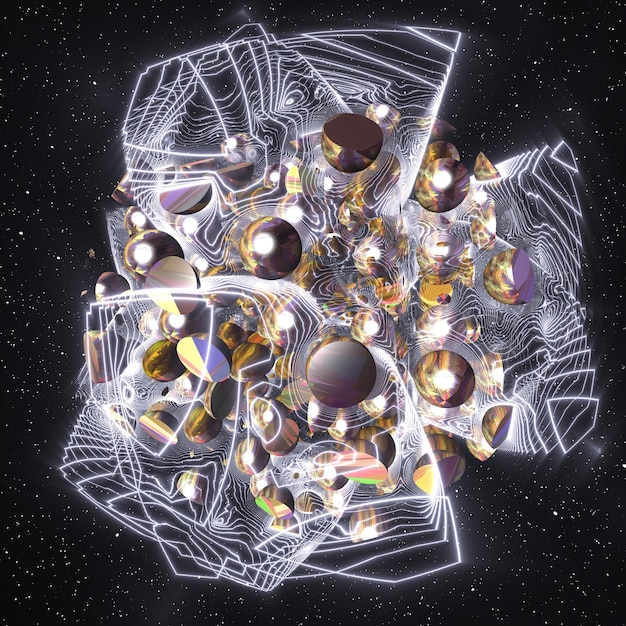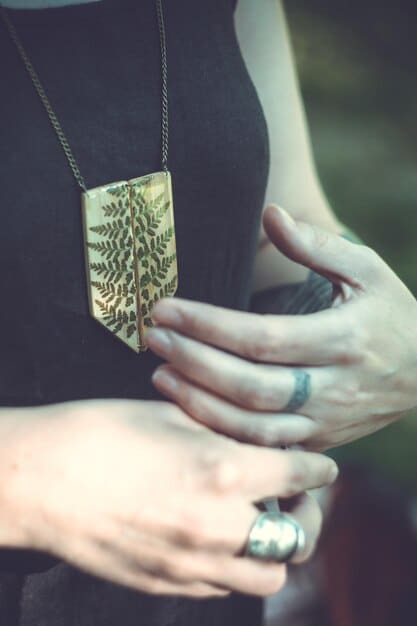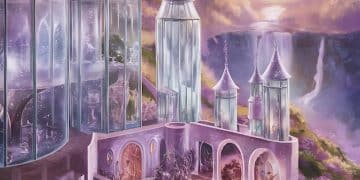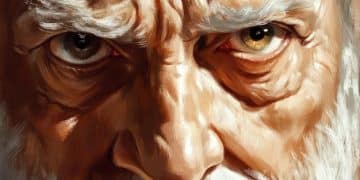The Witcher’s Relics: Lore, Power, and Impact Unveiled

The Importance of Relics: Uncovering the Lore Behind Powerful Artifacts and Their Impact on the Witcher World reveals how these objects shape destinies, drive narratives, and define characters within the rich universe of the Witcher saga, exploring their hidden histories and potent abilities.
Dive into the captivating world of The Witcher and unearth the secrets held within the series’ most powerful artifacts. The Importance of Relics: Uncovering the Lore Behind Powerful Artifacts and Their Impact on the Witcher World is undeniable, as these items not only shape the narrative but also the fates of its characters.
The Allure of Witcher Relics: More Than Just Items
Relics in The Witcher are more than mere objects; they’re vessels of history, power, and often, grave consequences. These items, imbued with magic or significance, weave themselves into the very fabric of the narrative.
From swords passed down through generations to mystical artifacts capable of altering reality, each relic carries a story, a purpose, and an impact that extends far beyond its immediate use.

Weapons of Legend: Witcher Swords and Their Tales
Witcher swords, especially those forged from meteorite iron and silver, are iconic relics that represent the profession itself. Each sword signifies a Witcher’s skill, dedication, and the battles they’ve faced.
These weapons are not just tools but extensions of the Witchers, imbued with runes and enchantments that enhance their effectiveness against specific monsters.
- Geralt’s Silver Sword: Specifically designed for monsters, it symbolizes his role as a protector.
- Aerondight: A legendary sword that grows stronger with each righteous kill, embodying the idea of moral growth.
- Zireael: Ciri’s sword, a symbol of her lineage and destiny tied to the Elder Blood.
The tales surrounding these swords contribute to the rich tapestry of the Witcher world, adding layers of depth and meaning to the adventures of Geralt and his companions.
Mystical Artifacts: Objects of Immense Power
Beyond weaponry, The Witcher universe is replete with mystical artifacts that possess extraordinary powers. These objects can manipulate magic, reveal hidden truths, or even alter the course of destiny.
The most powerful relics are frequently sought after by various factions, leading to conflicts and quests that define major plotlines within the saga.
The Sunstone: A Source of Untold Energy
The Sunstone is a powerful artifact capable of focusing and projecting solar energy. It plays a critical role in preventing catastrophic events.
This relic embodies the forces of creation and destruction, tied to the balance of the world and the survival of its inhabitants.
The Wild Hunt’s Masks: Symbols of Dread
The masks worn by the Wild Hunt are both terrifying and powerful. These masks enhance their ability to traverse dimensions, making them a formidable threat.
These artifacts are dark and mysterious, embodying the relentless pursuit and the supernatural nature of the Wild Hunt.
The existence of such artifacts underscores the perilous nature of the Witcher world, where magic holds immense potential but also poses significant risks.
Character Defining Relics: Shaping Destinies
Relics often play a pivotal role in shaping the destinies of key characters within the Witcher narrative. These items serve as catalysts for growth, conflict, and self-discovery.
They influence not only the choices characters make but also the paths they tread, leading to transformative experiences and profound revelations.

The Swallow Pendant: A Symbol of Witcher Heritage
The Swallow pendant, worn by Ciri, represents her connection to the Witcher world and her surrogate father, Geralt. It symbolizes protection and belonging.
This relic marks her transformation from a princess to a Witcher trainee, highlighting her unique journey and dual identity.
The Book of Alzur: A Repository of Knowledge
The Book of Alzur contains ancient knowledge and spells, shaping the understanding and abilities of sorcerers. It unlocks new potentials but also carries the burden of responsibility.
This artifact empowers its wielders with arcane power but comes with the ethical challenge of using such knowledge wisely.
Relics and Moral Choices
Ultimately, relics often force characters to make difficult moral choices, testing their values and defining their true nature. These moments highlight the complexities of the Witcher world.
- Decisions on how to wield the power of magical artifacts.
- Choosing between personal gain and the greater good.
- Balancing justice and mercy when dealing with relic-related conflicts.
The relics thus act as narrative devices that drive character development and reinforce the thematic depth of the Witcher saga.
The Impact on Narrative: Driving the Story Forward
Relics are instrumental in driving the narratives within The Witcher series, often serving as the central focus of quests and storylines. These items shape the course of events.
They create conflict, tension, and mystery, compelling characters to embark on perilous journeys and confront formidable adversaries.
Quests for Power and Knowledge
Many quests revolve around locating, protecting, or destroying powerful relics. This fuels the plot and provides motivation for character actions.
These quests often lead to unexpected discoveries, challenging alliances, and significant turning points in the story.
Creating Dramatic Tension
The existence of dangerous artifacts creates a sense of impending doom, as their misuse could lead to catastrophic consequences. This suspense permeates the narrative.
The constant threat of relics falling into the wrong hands adds layers of complexity and uncertainty to the Witcher world, keeping players and readers engaged.
- The potential for relics to be used for evil purposes.
- The race against time to secure or neutralize dangerous artifacts.
- The ethical dilemmas surrounding the possession and use of powerful relics.
Through these narrative contributions, relics ensure that The Witcher remains a compelling and immersive experience.
Ethical Considerations: The Burden of Power
The possession of powerful relics raises profound ethical questions within The Witcher universe. Characters grapple with the responsibility that comes with wielding such immense power.
These dilemmas affect their decisions and actions, and they provide insights into the moral complexities inherent in the Witcher world.
The Temptation of Corruption
Relics can corrupt those who seek to control them, leading to morally questionable decisions and irreversible consequences. The lure of power is seductive and often destructive.
Characters must navigate the fine line between using relics for good and succumbing to the temptation of personal gain or domination.
The Greater Good vs. Personal Sacrifice
Sometimes, the right course of action involves relinquishing or destroying a relic, even if it means sacrificing personal power or facing significant risks. This tests the characters’ resolve.
- The decision to destroy a relic that could save lives but could also be abused.
- The willingness to sacrifice oneself to prevent a relic from falling into the wrong hands.
- The moral implications of using a relic for short-term gain when it could have long-term consequences.
The ethical considerations surrounding relics contribute to the nuanced and thought-provoking nature of the Witcher saga, inviting reflection on the nature of power and responsibility.
Relics in The Witcher Games, Books, and TV Series
Relics play significant roles across various adaptations of The Witcher, each medium bringing its own interpretation and emphasis on these artifacts.
By comparing and contrasting the portrayals of relics, we gain a deeper understanding of their importance and how they contribute to the overall Witcher experience.
Adaptational Differences
While the core lore remains consistent, the specific relics featured, and their degree of prominence, may vary between the games, books, and TV series.
These adaptational differences reflect the unique narrative requirements and creative choices made by each medium, enhancing the diversity of the Witcher universe.
- Video games enabling hands-on interaction with relics during gameplay.
- Books delve deeper into the history and significance of each artifact.
- The TV series provide visual representations of relics, enhancing their mystique.
Ultimately, the recurring presence of relics across different versions of The Witcher underscores their enduring appeal and thematic relevance.
| Key Point | Brief Description |
|---|---|
| ⚔️ Witcher Swords | Iconic weapons representing a Witcher’s skill and dedication. |
| ☀️ The Sunstone | A powerful artifact capable of focusing and projecting solar energy. |
| 🎭 Wild Hunt Masks | Masks that enhance the Wild Hunt’s ability to traverse dimensions. |
| 📖 Book of Alzur | A repository of ancient knowledge and spells, shaping sorcerers. |
Frequently Asked Questions
▼
Witcher relics are vital because they hold significant power, historical importance, and often drive the main plots. They shape characters’ destinies and reveal crucial elements of the lore.
▼
Yes, relics can corrupt those who seek their power. The temptation they offer leads to morally questionable decisions and can have grave consequences for individuals and entire societies.
▼
Some of the most notable relics include the Sunstone, the Wild Hunt’s masks, and unique Witcher swords like Aerondight. These items have immense power and influence on the world.
▼
Relics often serve as the focus of quests and storylines, creating conflict, tension, and mystery. They compel characters to embark on perilous journeys and confront formidable adversaries.
▼
Yes, adaptations like games, books, and TV series may vary in their depiction and prominence of different relics, enhancing the diversity of the Witcher universe and appealing to different audiences.
Conclusion
In conclusion, the relics of The Witcher are far more than just objects; they are integral components of the world’s rich lore, character development, and narrative drive. They embody power, history, and morality, compelling us to ponder their significance and impact.





